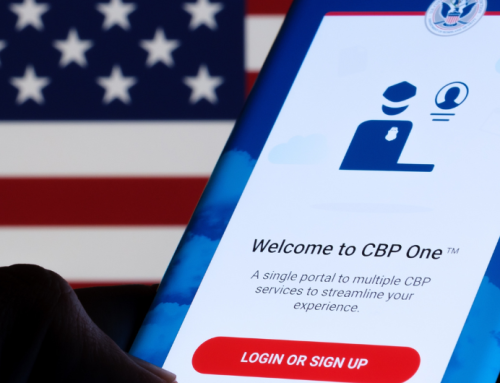Guide to Deferred Action for Immigrant Youth (DACA)
 The Obama administration recently announced that it will offer relief from deportation for young immigrants who were brought to the country as minors and meet other specific requirements. The move, praised by immigration advocates as a bold response to the broken immigration system, temporarily eliminates the possibility of deportation for youths who would qualify for relief under the proposed DREAM Act, giving Congress the space needed to craft a bipartisan solution that gives permanent residence to qualifying young people. American Immigration Council published a Questions & Answers guide outlining basic facts on deferred action, who is eligible, and important information on process and timing.
The Obama administration recently announced that it will offer relief from deportation for young immigrants who were brought to the country as minors and meet other specific requirements. The move, praised by immigration advocates as a bold response to the broken immigration system, temporarily eliminates the possibility of deportation for youths who would qualify for relief under the proposed DREAM Act, giving Congress the space needed to craft a bipartisan solution that gives permanent residence to qualifying young people. American Immigration Council published a Questions & Answers guide outlining basic facts on deferred action, who is eligible, and important information on process and timing.
What is deferred action?
Deferred action means that the Department of Homeland Security (DHS) has determined that an individual is a low priority for immigration enforcement and has chosen to exercise its discretion and not deport the individual. Deferred action is a temporary relief from deportation. Deferred action is NOT amnesty or immunity. It does NOT provide a path to a green card or citizenship. It does NOT extend to any family members of the person granted deferred action.
Who will be eligible for deferred action?
People may apply for deferred action if they:
- came to the U.S. under the age of 16;
- are under age 31;
- have resided in the U.S. for five consecutive years as of June 15, 2012;
- are currently in school, have graduated from high school, have obtained a GED, or have been honorably discharged from the armed forces;
- have not been convicted of a felony offense, a significant misdemeanor, or more than three misdemeanors; an
- do not pose a threat to national security or public safety.
How long does deferred action last?
Deferred action will be granted for two-year increments and must be renewed every two years. Deferred action can be terminated at any time at DHS’s discretion.
Can a person who is granted deferred action work legally in the U.S.?
Yes, individuals with deferred action will be able to apply for work authorization and receive an Employment Authorization Document (EAD). There is a $380 fee to apply for an EAD. The EAD will also have to be renewed every two years.
How and when can people apply for deferred action?
Right now, there is no process for individuals to affirmatively apply for deferred action. Do not apply now because your application will be rejected. U.S. Citizenship and Immigration Services (USCIS) will devise a plan within 60 days (before August 14, 2012) that allows people 15 and older to affirmatively apply for both deferred action and work authorization. People with final orders of removal will also apply to USCIS.
Can eligible individuals also apply for their parents and siblings?
No.
How will the USCIS process for affirmatively obtaining deferred action work?
We do not know exactly how USCIS’s process will work. We do know that individuals will have to provide documentation proving their age, when they came to the U.S., that they’ve been living in the U.S. for at least 5 years, and that they were physically present in the U.S. on June 15, 2012. They will have to prove they are currently in school, graduated from high school, have a GED, or have been honorably discharged from the military. Individuals will also undergo a background check.
Who is eligible for deferred action now?
As of June 15, 2012, immigration agents have been directed not to place individuals into removal proceedings if they meet the above criteria. Those individuals will be granted deferred action and will therefore also be eligible for work authorization.
For those already in immigration proceedings, U.S. Immigration and Customs Enforcement (ICE) will begin making determinations about deferred action immediately.
Should people who fit the criteria turn themselves into immigration?
NO. Eligible individuals who are not already in deportation proceedings SHOULD NOT turn themselves in. They should wait for an announcement of the formal application process.
Should I pay someone to get me deferred action?
NO. There is currently no process to apply for deferred action and you shouldn’t listen to anyone who claims to be able to get deferred action for you. Everyone must beware of scam artists and notarios who will try to take advantage of the public.
Answers to other frequently asked questions:
It is not yet clear if people with deferred action will receive a document that states they have been granted deferred action or whether they will only receive an EAD.
It is not yet clear whether people with deferred action will be able to travel outside of the U.S. USCIS has promised to resolve this question.
Whether or not people with deferred action will be able to get a driver’s license will likely depend on the laws of each state, which determine what documentation is acceptable to prove state residency and legal status.
Whether or not people with deferred action will qualify to receive in-state tuition at colleges and universities will also likely depend on state laws, which determine what documentation is acceptable to prove state residency.
USCIS now has a hotline to answer questions about deferred action. The hotline will be available from 8am to 8pm in English and in Spanish. The number is 1-800-375-5283.
Read the original posting on the American Immigration Council website.
Attorneys at I.S. Law Firm have provided consultation and legal help to many young immigrants, including in complicated cases involving removal proceedings. To explore your immigration options, please contact us at +1-703-527-1779 or via email at [email protected].






